Siamese commandos
Guerrilla wars - the main threat to order in the country
The share of Thailand fell a lot of tests and before the beginning of the Second World War, and in the postwar period. In the second half of the twentieth century, one of the most important domestic political problems of the country was the activities of armed rebel groups on its territory. Thai partisans were divided into at least three groups. First, it was the armed units of the Communist Party of Thailand. As in other countries of Indochina, after the end of the Second World War, the Communists became more active in Thailand, hoping to make revolutionary changes in the country on the model of neighboring North Vietnam. In 1960-1961 there was a transition of the Communist Party of Thailand to the Maoist positions, after which it decided to move to armed resistance to the Thai regime. The People’s Liberation Army of Thailand was established, supported by Chinese and Vietnamese intelligence services and operating mainly in the northern and northeastern provinces of the country. The communists managed to considerably spoil the nerves of the Thai leadership, although they did not acquire positions comparable to those held in neighboring Indochina countries. By the end of 1980-x - the beginning of 1990-x. the communist guerrilla war gradually came to an end - having lost the support of China, the Thai communists were in a state of crisis and soon ceased armed resistance.
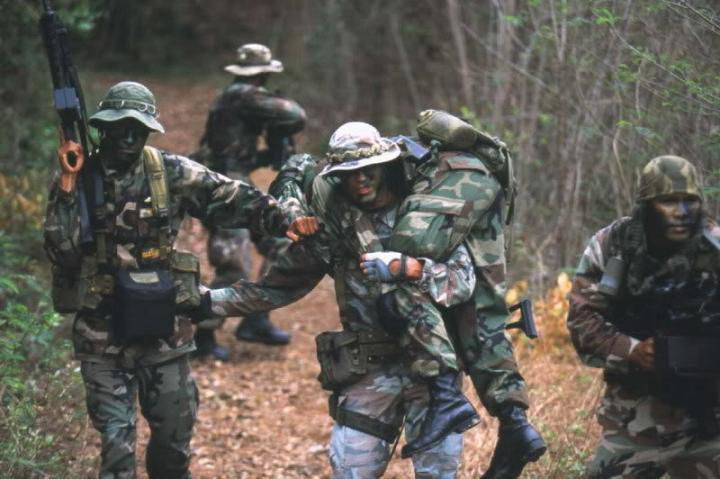
In addition to the communists, in the jungles of Thailand, since the post-war years, there were separatist armed groups of national minorities. Many of them are active up to the present - on the western borders of the country. Karen and Shan partisan detachments, leading the armed struggle for the creation of independent states of Karen and Shan on the territory of Myanmar, are infiltrating from Thailand to neighboring Myanmar (Burma) and back. Naturally, the Thai government’s presence of foreign fighters on its territory gives few positive emotions, especially when the guerrillas cross the verge of rationality and begin to commit crimes in Thai settlements.
Finally, the third and most serious threat to the political order in a number of provinces in Thailand is Muslim radicals. In the southern provinces of the country live an impressive number of ethnic Malays, Muslims. Actually, these provinces are part of Malaya, once captured by the Siamese kings. Naturally, the Malay population, which feels ethnic and confessional kinship with the inhabitants of neighboring Malaysia, hopes for separation from Thailand and reunification with Malaysia. Starting from the 1970's. Among the Malays of Thailand, radical Islamist ideas became widespread. Malay separatists want to create the state of Great Pattani. On the other hand, in the border areas with Malaysia for a long time, armed groups of the Communist Party of Malaya were operating. Only by the beginning of the 1990's. their resistance has ceased. Thus, in the south of the country, the royal government of Thailand turned out to be a serious opponent.
The guerrilla war in the northern, northeastern and southern provinces of Thailand caused the need to improve the forms and methods of activity of the Thai army and other security forces. Against guerrilla formations, traditional methods of warfare were ineffective, and the Thai military commander in the second half of the twentieth century had to start creating and developing their own special forces along the lines of the American green berets and other commando formations. Played its role and the Vietnam War, which also involved the armed forces of Thailand. Currently, its own special forces have all kinds of Thai armed forces, as well as police structures.
Army, guards, air special forces
The Thai Ground Forces includes the Special Operations Forces, which includes 2 special-purpose infantry divisions and 1 special-purpose reserve infantry division. These are the most massive units of the Thai army special forces, focused on tasks to combat the rebels. To solve operational problems, the Rapid Deployment Forces were created, the basis of which was the 3rd battalion of the 31st Infantry Regiment, stationed in Camp Yaravan. Formally, the Rapid Deployment Forces are part of the 1st Army, are actually in the direct possession of the army command and can be deployed anywhere in the country as soon as possible. The Rapid Deployment Force consists of two infantry companies, one aviation company, one artillery battery, one tank company, one sapper platoon and air defense unit. By their characteristics, the Rapid Deployment Forces are identical to the army battalion, but they have greater mobility and autonomy. The operations of the Rapid Deployment Force are supported by the Army Aviation Center.
Own special forces are part of the Royal Guard of Thailand. The Royal Guard of Thailand - one of the oldest forms of the armed forces of the country. Back in 1859, Prince Chulalongkorn created the first squad of royal guardsmen. In 1868, becoming king, Chulalongkorn formed a squad of 24 bodyguards. After a trip to Russia, the king of Thailand introduced uniforms modeled on the Russian imperial army, which existed in the royal guard until the 1970-s. The Royal Guard includes not only ceremonial units, but also units of protection and special purpose. The fourth battalion of the royal guard was formed to protect the royal family and the leading statesmen of the country. Since the beginning of the 1980's. he also took over the functions of the anti-terrorist unit. The size of the battalion is small - only 140 soldiers and officers, including a two-person command section and six combat teams of 23 people each. The combat teams, in turn, are divided into four combat and two sniper sections.
The Royal Thai Guard is part of the Queen’s 21 Infantry Regiment. It was created by 22 September 1950 to participate in the UN peacekeeping operation in Korea. For the courage of its soldiers and officers during the Korean War, the regiment received the name “Little Tiger”. The regiment's servicemen participated in the Vietnam War on the US side as volunteers, then regularly took part in operations against the communist rebels in the territory of Thailand itself. The regiment includes the 1 rifle and 2 infantry battalions of the Queen’s Guard.
In the Air Force of Thailand there is a squadron of special combat operations. Her number reaches 100 people. The squadron of aviation special forces includes a commando company of three combat platoons with two combat sections each. The squadron's station is located at Don Muant Airport. As you might guess, the main profile of the activities of aviation special forces is the fight against seizures and hijackings of aircraft, as well as the protection of aviation facilities. Thai aviation special forces are trained in the techniques of the Australian Special Air Service (SAS).
Special Forces Marine Corps
Perhaps the most famous and effective special forces of the Thai armed forces are the special forces of the naval forces of the country. Special Maritime Command includes an amphibious company of the Royal Marine Corps Reconnaissance Battalion and Royal Thai SEAL fleet. The Royal Thai Marine Corps is the country's oldest elite force. The first units of the Marines were created in 1932. With the participation of American military instructors, they formed the first battalion of the Marine Corps, which was enlarged to the size of a regiment in 1940 and worked well during operations against communist rebels in the 1960s and 1970s. In the 1960s the regiment was increased in size to a brigade, and since the 1970s. As part of the country's marine corps, there were two brigades created and trained with the help of American instructors.
In 1972 and 1973 Thailand’s marines played an important role in anti-insurgency operations in the provinces of Northern and Northeastern Thailand, and in 1973-1974. - in counterinsurgency operations in the provinces of Southern Thailand. Currently, it is the Marine Corps that serves the state border guard service in the provinces of Chanthaburi and Trat, and is fighting Malay separatists in the southern provinces of the country. Currently, the Marine Corps includes one division of the Marine Corps. It includes three marine regiments of three battalions each (one of the marine battalions is part of the royal guard and performs both ceremonial and operational functions), 1 artillery regiment of marines with 3 artillery and 1 anti-aircraft artillery divisions squad, 1 Marine Corps Assault Battalion and 1 Marine Corps reconnaissance battalion.
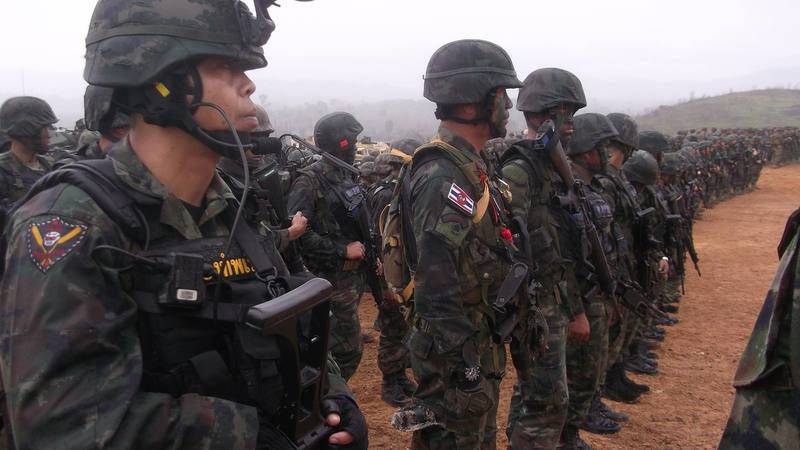
In 1965, an amphibious reconnaissance company was created in the Marine Corps. It was assigned the task of conducting reconnaissance operations, identifying explosive barriers, reconnaissance of the coast and preparing it for the landing of larger units. The effectiveness of the unit contributed to the fact that in November 1978, a reconnaissance battalion of marines was established on the basis of the company. The battalion includes a headquarters company with a canine platoon, an amphibious company with a division of combat swimmers, two motorized companies on armored vehicles and an antiterrorist group. The reconnaissance battalion can act both independently and as part of various marine regiments. In particular, battalion companies can be attached to marine regiments to accomplish operational tasks. The fighters of the reconnaissance battalion have a higher level of training than other marines. In particular, they undergo a three-month training program on the amphibious reconnaissance course at the Center for Special War in Sattahip, in accordance with which they master the tactics of amphibious assault operations, ground special operations, and conducting special reconnaissance.
After graduation from the Special Warfare Center, future marines scouts undergo an airborne training course. They are required eight jumps with a parachute and two jumps with a parachute on the water, after which the cadets receive the qualification of a parachutist. Also, the battalion fighters regularly train with the special units of the US Marine Corps. American military instructors generally traditionally play a key role in training the special forces of the Thai army, air force and naval forces, since Thailand remains one of the key US military partners in Southeast Asia and cooperation with it, including in the military education is of strategic interest to the United States.
The reconnaissance battalion is the elite of the Thai marines, but inside the reconnaissance battalion there is also a “special unit in the special unit” - an amphibious reconnaissance company. It faces the task of conducting reconnaissance, not only during ground landing operations, but also under water, as well as the fight against insurgents and terrorism. The main emphasis in the preparation of fighters of an amphibious company is on the preparation for conducting operations in the waters of rivers - in fact it is in the river basins that the marines often have to act within the framework of anti-rebel companies. Unlike other companies of the reconnaissance battalion, the amphibious company also undergoes a course of light diving training, since its fighters may be assigned the tasks of conducting underwater operations.
Combat swimmers - the elite of the sea special forces
The Royal Thai Navy has a small but highly qualified and effective special unit - SEAL, or the Naval Special Operations Group. In the structure of the Thai Navy, it has departmental status and includes a headquarters, three special operations units, a training center, and combat and logistic support units. SEAL faces tasks in the field of conducting underwater special operations, first of all - subversive operations, but also other types of reconnaissance and sabotage operations in the enemy’s rear. The history of the creation of SEAL goes back to the post-war period, when the Thai naval command became interested in the experience of underwater sabotage units in other countries of the world. After lengthy consultations, in 1952, it was decided to create a team of underwater blasting operations. To this end, Thai naval officers enlisted the support of the United States, but during the period under review, the US Navy was acutely lacking qualified instructors in underwater subversive work, so the creation of a similar team in the Thai Royal Navy had to be postponed. However, as early as the next 1953, the CIA was instructed to provide assistance to Thailand in the training of naval submarine submarine teams and the air force reinforcement group of the Royal Thai Police. For this purpose, special instructors from similar American divisions were allocated and methodological support was organized.
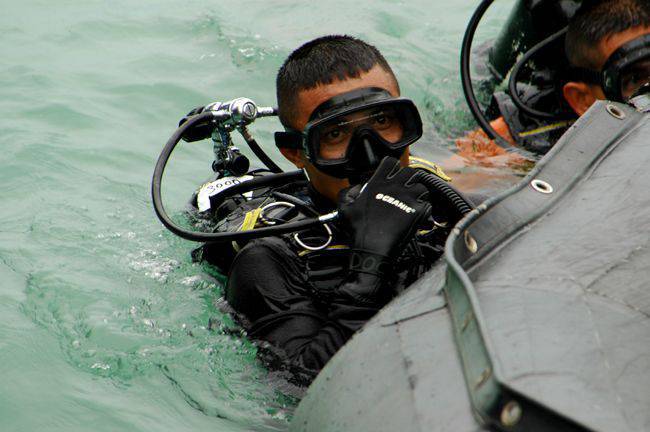
On the island of Zulu 4 March, 1953, the training of the first group of students, which included seven officers of the Navy and eight police officers, began. After graduating from the first group of cadets, the Thai Navy command announced the creation of a training center for the training of specialists in underwater blasting operations. Finally, in 1954, the first group of combat swimmers was formed. Since then, underwater bombers are the real elite of the special units of the Thai fleet. In 1956, the group of combat swimmers was increased to a platoon of underwater subversive teams. In 1965, the unit already included two platoons. Before the first platoon - SEAL - the task was to carry out reconnaissance and special operations, including the elimination of the political and military leaders of the enemy. The second platoon - UDT - focused directly on the implementation of underwater subversive actions. In 1971, a team of two platoons was approved - an underwater assault team and an underwater subversive team. In 2008, the teams were organized into the Special Forces Naval Command. The number of command reaches 400 officers and sailors. The command includes two teams SEAL. Each such team is a division of the company level consisting of 4 platoons and numbering 144 troops. The team is headed by an officer with the rank of lieutenant commander (captain 2 rank). Finally, the Special Operations Command of the Navy includes a secret group to suppress weapons.
For service in divisions of submarine teams selected the most trained and suitable for their psychological and physical qualities of the military of the naval forces of Thailand. The training course lasts 6-7 months. Most streams are screened out to 70% cadets. Few are able to withstand the "hell week" - cruel trials before selection to the unit. During training, students learn the techniques of national and world hand-to-hand combat systems, master all types of small arms and cold weapons, learn tactics of special operations on the water and in the coastal zone, methods of underwater sabotage, special reconnaissance, and undergo parachute training. Completes the preparation of "hell week." For a whole week, cadets are forced to experience the hardest physical and psychological stress at the limit of human capabilities. In Thailand, there is the only special tank in Southeast Asia for diving training. Cadets are trained to dive to a depth of 30 meters without scuba and other devices. Of course, such intense weeks of training often lead to serious injuries and even death among cadets applying for service in diving units. But, despite the dangers, the flow of those who wish to continue their service in the elite unit of the Thai Navy does not fall. Most applicants for the service are eliminated in the process of preparation and only the best fighters make it to the final admission to the units. Underwater swimmers often conduct joint training and exercises with similar units of the US Navy. Thailand-US joint exercises of combat swimmers and submarine demolition units take place five times a year.
In recent years, the fight against terrorism and drug trafficking has been added to the priorities of the Thai naval special forces. Maritime commandos carry out the fight against drug trafficking in the Andaman Sea, collecting intelligence information about the activities of the drug mafia. In addition, the units of the naval special forces are regularly involved in the functions of ensuring the safety of naval bases and the command of the Navy, and protecting public order during international events.
It should be noted that it is in Thailand that the famous Golden Cobra naval exercises are held under the auspices of the US Navy. The units of the US Marine Corps, as well as the closest US allies in the Asia-Pacific region - Japan, South Korea, Singapore, Thailand, Malaysia and Indonesia, take part in the exercises. The first exercises took place in 1982, and since then they have been held in Thailand every year.
Police special forces against terrorists and the mafia
The Royal Thai Police also have their own special forces. Among them, first of all, it should be noted the group "Arintharat 26", specializing in the fight against terrorism and the release of hostages. This detachment is also regularly recruited to participate in the detention of highly dangerous and armed criminals and their escort. The special forces are armed with not only special small arms, but also anti-riot weapons, armored shields, night vision devices and even armored vehicles.
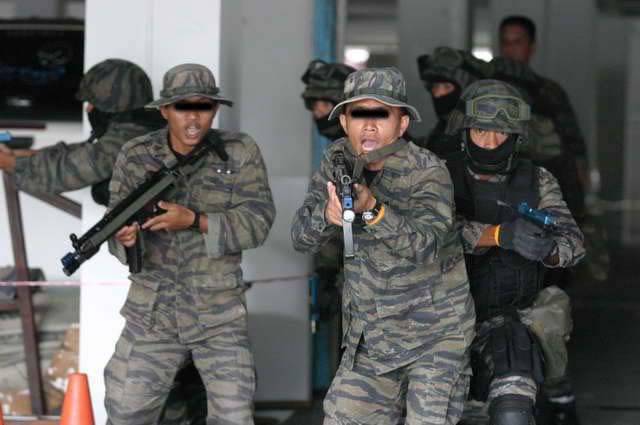
Another major special unit within the Royal Thai Police is Naresuan 261. This unit is named after the legendary King Naresuan the Great. The history of the unit began in 1983, when the Thai government decided to create a task force to combat political terrorism. The leadership of the Thai police received an order from the government to ensure the recruitment and training of special forces personnel. Currently, the task force “Naresuan 261” faces the challenge of combating terrorism and crime. In addition, special forces soldiers are involved in ensuring the personal safety of the king and queen, other members of the royal family, foreign representatives and heads of foreign states during their visits to the territory of Thailand.
Special Forces employees undergo initial training in teams of five people, modeled on the German Special Forces GHA-9. The training focuses on the study of special operations tactics, sniper training, water operations, driving various vehicles and physical training. Some cadets are sent to continue their studies in other states. The course of study includes five stages. The first stage is called “International Training Against Terrorism” for recruits and includes 20 training weeks. The second stage is a six-week anti-terrorism training for existing police officers. The third stage involves the 12-week course of disposal of explosives and ammunition. The fourth course includes a four-week training of those special forces, who are enrolled in the unit for the posts of snipers. Finally, in the process of the fifth stage of training during 12 weeks, students who are assigned to staff units and communications learn electronics knowledge. The partners of Naresuana in the training of special forces are similar structures from the United States, Australia, and Germany.
Thai Border Police
Speaking about the special divisions of modern Thailand, it should be noted another power structure - the Thai Border Police. Although, of course, the entire Border Police is not a special unit, but its subunits carry out the tasks of combating terrorism, rebels and protecting the state border. When the communist insurgents became more active in Thailand in the post-war period, the border police was formally established with the participation of the CIA of the United States. The main patron of the border police has become the royal family of Thailand. The officers in the border police units were recruited not from the ordinary police, but from army officers. Over the decades of its existence, border police have participated in a huge number of operations against the communist rebels, separatists and Islamic fundamentalists in various parts of Thailand.
The main advantage of the border police is its highly mobile organization. It includes hundreds of platoons of thirty-two people each. The platoon is the main operational unit of the border police. In addition to operational platoons, each regional border police headquarters has a platoon or several platoons equipped with heavy weapons and used to support operational platoons in case of need.
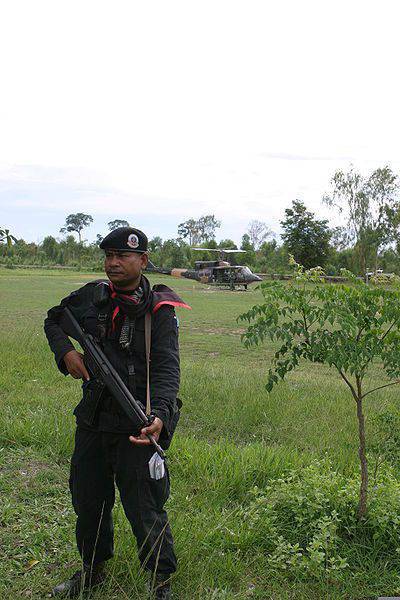 The border police are tasked with not only protecting the state border of the country, but also conducting intelligence in the border areas, as well as maintaining interaction with residents of remote areas and mountain tribes. It is the border police that carries out such purely peaceful activities in mountainous tribal areas as the organization of medical points, the distribution of medicines, the creation of schools, the construction of runways for air transport. Thus, the tasks of the border police include not only purely “power” activities, but also, in general, the implementation of administrative and control functions in the border areas of the kingdom.
The border police are tasked with not only protecting the state border of the country, but also conducting intelligence in the border areas, as well as maintaining interaction with residents of remote areas and mountain tribes. It is the border police that carries out such purely peaceful activities in mountainous tribal areas as the organization of medical points, the distribution of medicines, the creation of schools, the construction of runways for air transport. Thus, the tasks of the border police include not only purely “power” activities, but also, in general, the implementation of administrative and control functions in the border areas of the kingdom. The Thai border police air unit is responsible for the preparation and conduct of amphibious operations, disaster prevention, search and rescue operations in the area of the plane crash. Each member of the air unit undergoes a mandatory parachute training course. In addition to rescue functions, the group performs anti-terrorism tasks, carries out parachute training in other units of the Royal Thai Police. In addition, since the post-war years, the border police of Thailand has been the main organizer and “patron” of paramilitary armed groups in the country that perform support tasks in the fight against crime, insurgency, terrorism, guarding the state border and conducting intelligence activities against the rebels.
In 1954, the Volunteer Defense Corps was created as part of the border police, to which the command set the task of protecting the rule of law and eliminating the consequences of emergency situations. The creation of the corps was a response to numerous complaints from residents of remote and mountainous areas of harassment by criminal gangs and partisan detachments of communists and separatists. The voluntary corps of defense took an active part in anti-insurgency operations, blocking the rebels from accessing water and food sources. In 1974, the Volunteer Defense Corps was expanded to merge with the Operational Security Command and reach 50 000 people by year 1980.
The border police in 1971 established another paramilitary organization, Rural Scouts. Initially, she united the villagers who were loyal to the monarchy and were ready to fight in the ranks of the militia against the communist partisans. A five-day course of training in the groups of rural scouts passed up to five million Thais. Rural scouts were disbanded in 1981, however, in 2004, they resumed their activity amid growing secessionist sentiments in the Muslim-populated Malay provinces of southern Thailand.
Finally, another organization created under the control of the Thai border police was Thahan Pranh - the Thai Rangers. This structure has the character of a volunteer militia that performed anti-insurgency tasks along the Cambodian and Burmese borders. Rangers have a militarized structure in the form of division into the 32 regiment and 196 mouth. In 2004, Ranger units were deployed in the provinces of Southern Thailand to fight Malay separatists fighting for the creation of the independent state of Great Pattani.
The difficult political situation in Thailand suggests that special forces will always be in demand in this Indo-Chinese country. As soon as it was possible to suppress the Communists in the northern and northeastern provinces, Islamic radicals and Malay separatists in southern Thailand became more active. In addition, we should not forget that Thailand partially includes the territory of the so-called “golden triangle”. Detachments of drug traffickers and the state have always acted here, despite numerous efforts, until they finally managed to overcome the drug trade. Finally, the fight against piracy is a serious area of activity for the special forces of Thailand, especially for the special forces of the marines and fleet, since pirates are active in the waters off the coast of many countries in Southeast Asia.
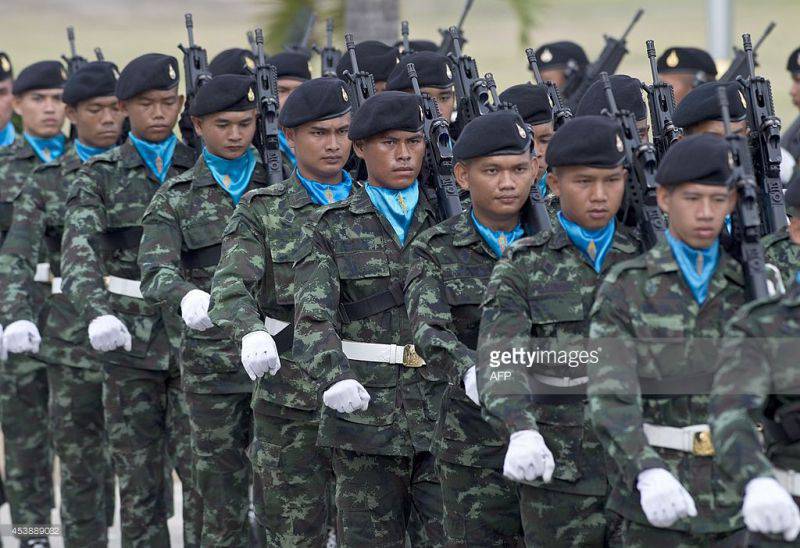
Information